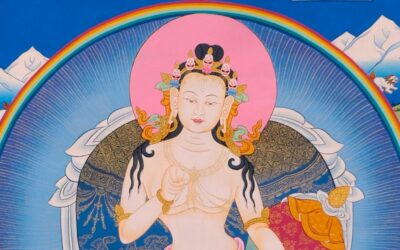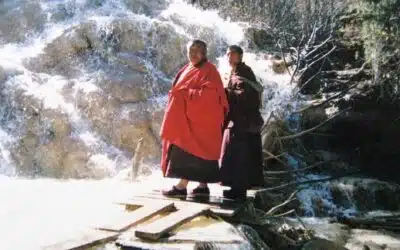The Jedi Master and the Friend of Basic Goodness

Written By Paul Baffier
Blog | Culture and tradition | The Dzogchen basics
At the end of Star Wars The Force Awakens, Episode 7, there is a beautiful scene:
Rey, after many adventures and having escaped a thousand deaths, crosses the ocean alone and arrives on the island where the Jedi Master awaits her.
Luke Skywalker, thought to be dead, is there, standing in the wind.
This romantic symbolism reflects well what happens when one day, at the turn of a life, one finds the master.
It is truly the end of the wandering on the ocean.
One enters an island where a completely different atmosphere reigns. This is the place where the Force rules, and we will learn its laws.
Not to use it, but to know its intimate nature: the profound basic goodness.
Thus, the one who knows this profound goodness is called a “friend of basic goodness”.
But before all that, Luke Skywalker’s presence on the shore of the island tells us something else more fundamental: the Master exists. He is out there, somewhere, on the ocean of existence, and he is just waiting for us to find him.
The correspondence between the Jedi Master and the Dzogchen Master may not be complete, but it has similar features:
Both are like a highway. Once one has entered their soil, they are a gigantic acceleration of the path. It is that the Force, which the master has mastered, pushes us towards the fundamental meeting.
Both live on an island that is at the center of the ten directions, in contact with all the movements of the water. There is not a wave that they do not know. This island of total knowledge and clarity is the precious place where the transformation of the Padawan can take place. Here he will learn to overcome his human limitations without denying his humanity.

Both can disappear in an instant, like a bubble, like a hologrammatic mirage, like a shadow under the sun, like an empty coat hit by a light saber.
Both the Dzogchen and the Jedi Master are expressions of the Force: the awakened nature reflected in the students to be taught in the form of a knower of goodness, who will radiate this goodness in all words and deeds to fill hearts with it.
The Tibetan tradition has established a typology of different aspects of the master: the master lineage-holder, the master who is the word of the enlightened ones, the master who is the symbol of appearances, the master ultimate reality, etc. These well-defined categories anchor the figure of the master in the Tibetan tradition. These well-defined categories anchor the figure of the master in the reality of the different experiences that the disciple will have along his path.
But before all that, Luke Skywalker’s presence on the shore of the island tells us something else more fundamental: the Master exists. He is out there, somewhere, on the ocean of existence, and he is just waiting for us to find him.
He even wishes for this to happen.
More Posts
The Story of the First Masters: Garab Dorje
“The Story of the First Masters: Garab Dorje” is the first article in a new category about the masters of the Dzogchen lineage.
A Garland of Light
In “A Garland of Light”, Johanne talks about the way the lineage of the Great Perfection is passed on, since its beginning.
Stories When the Light Fades
In “Stories When the Light Fades”, Mila Khyentse recalls some of his Master’s Jack-o’-lantern stories told at night.



